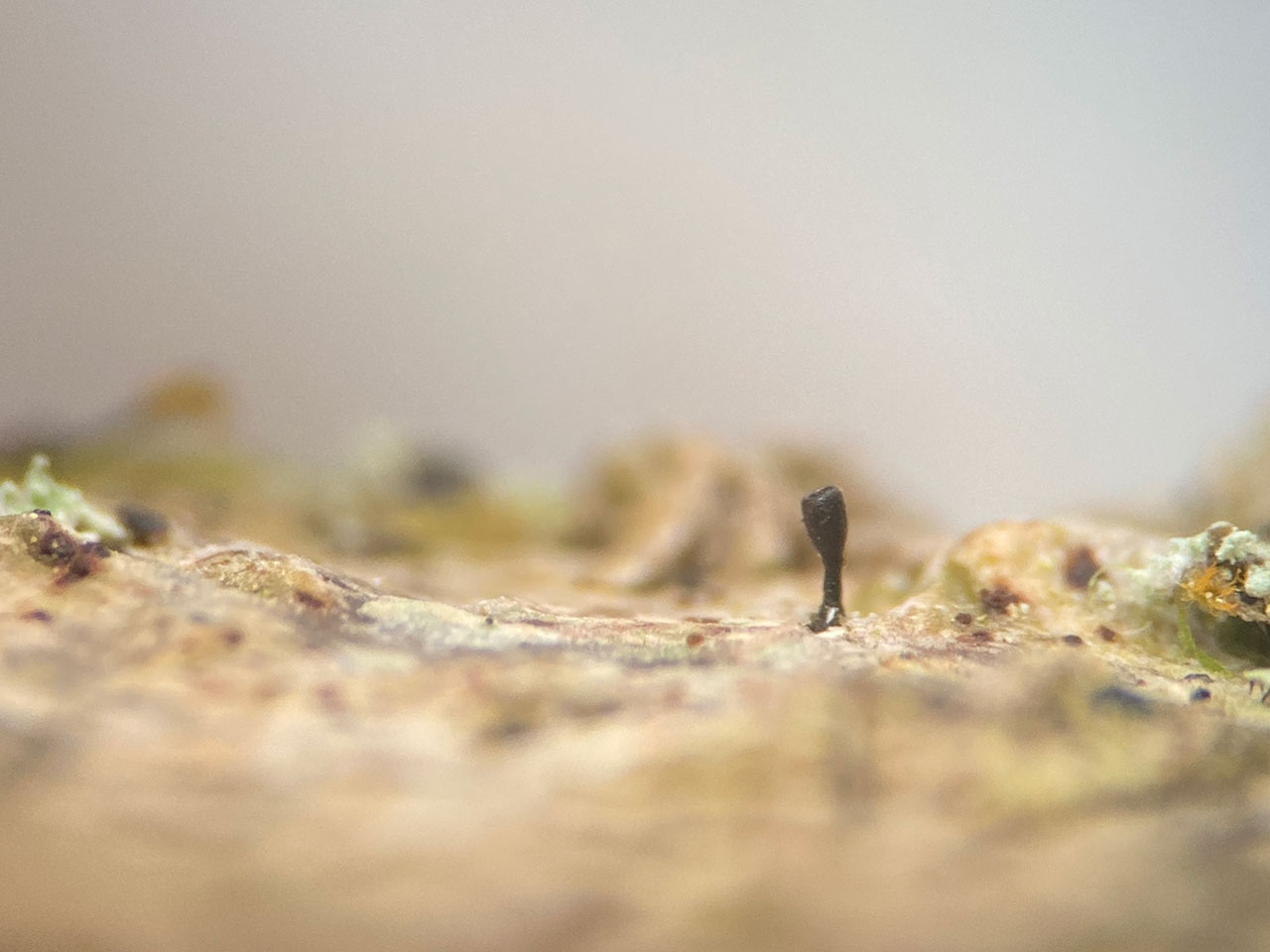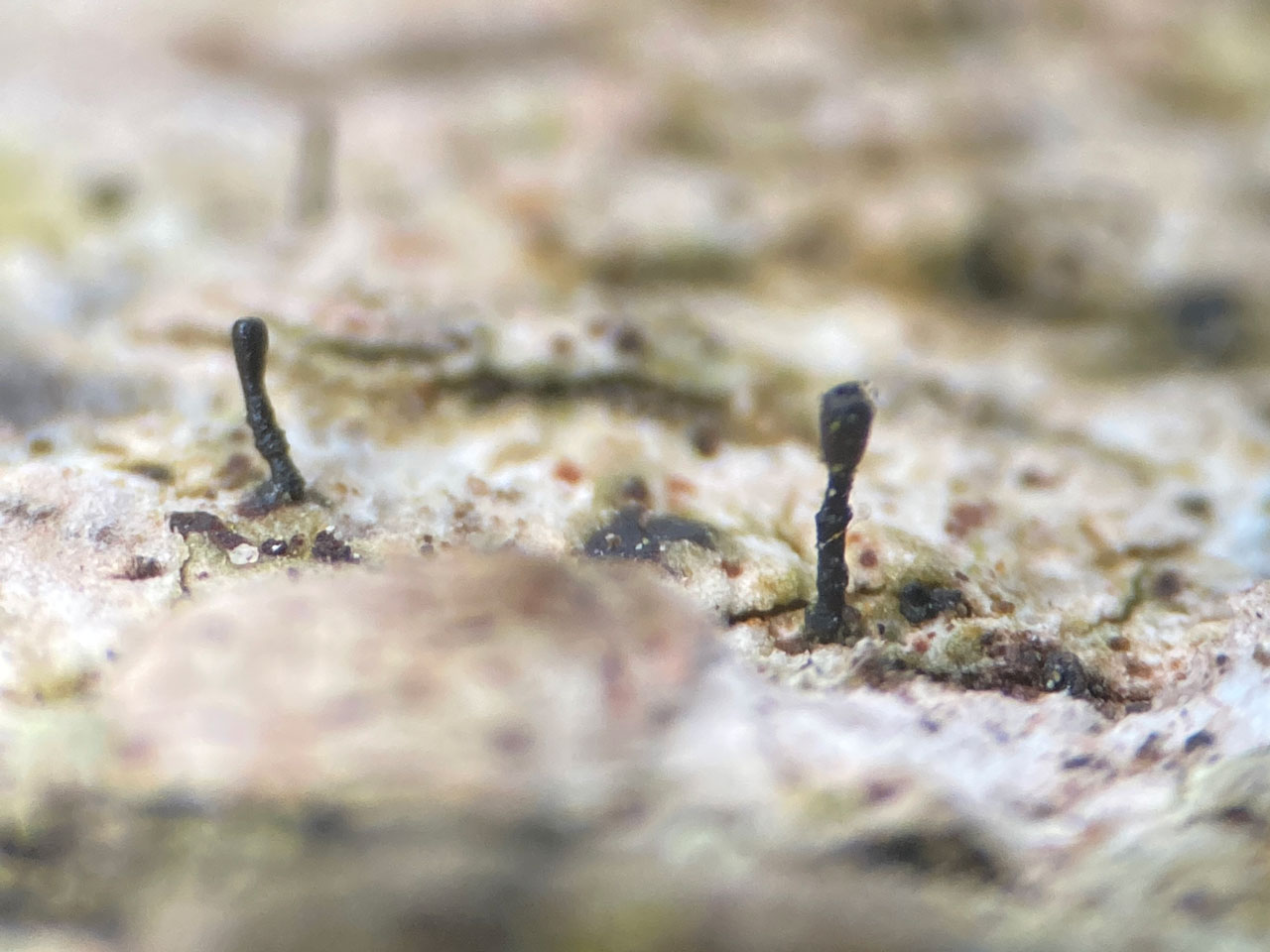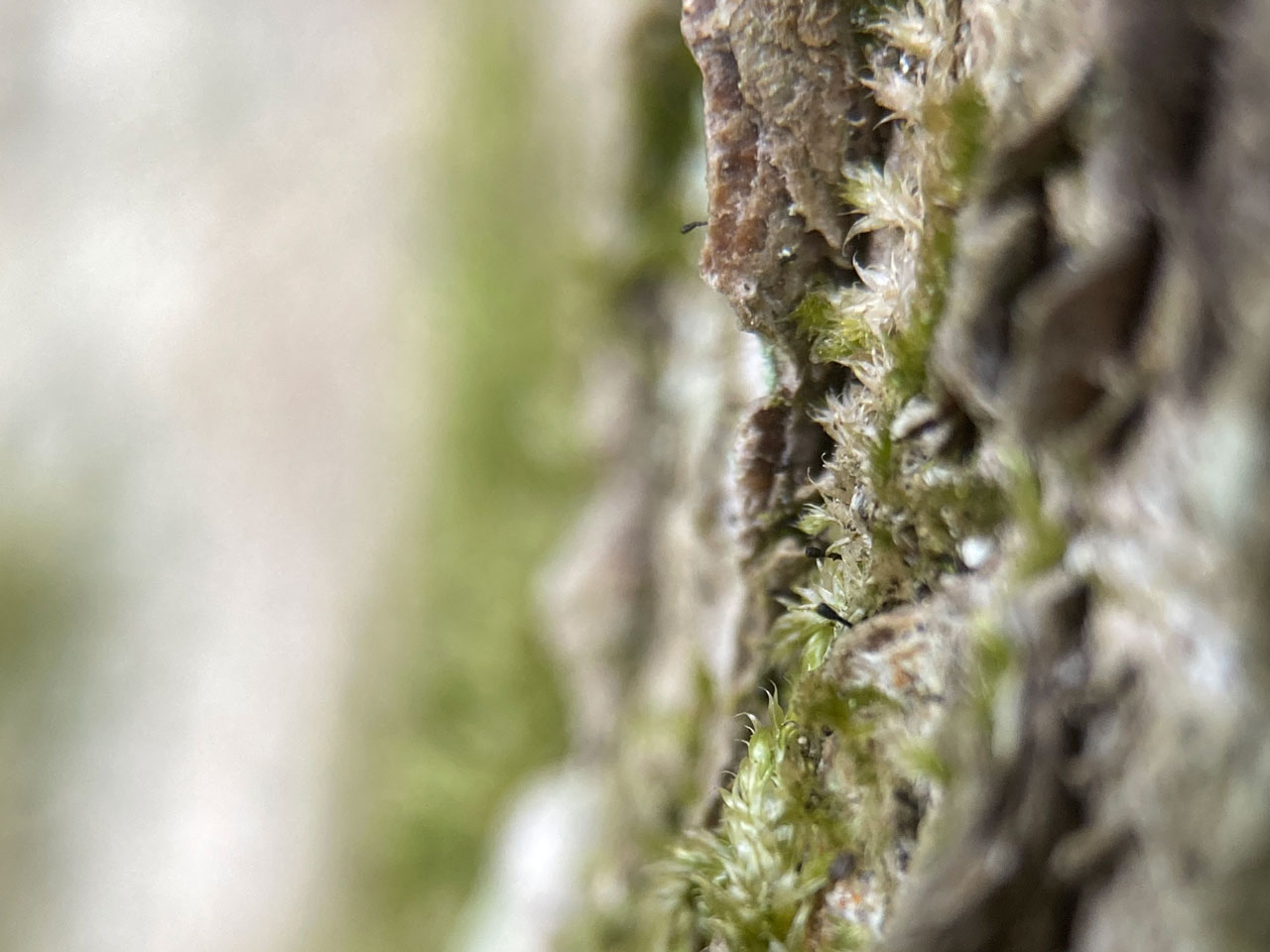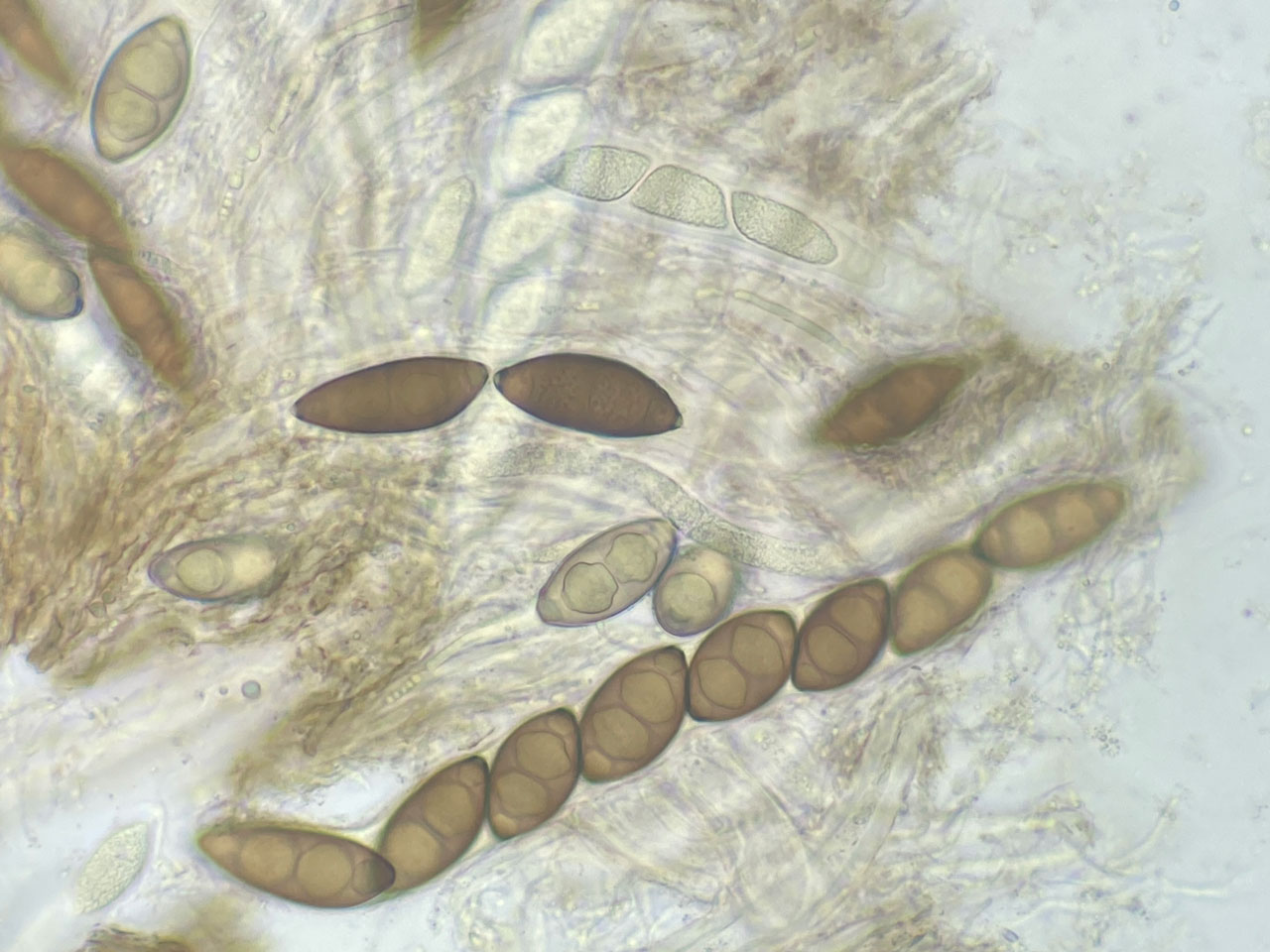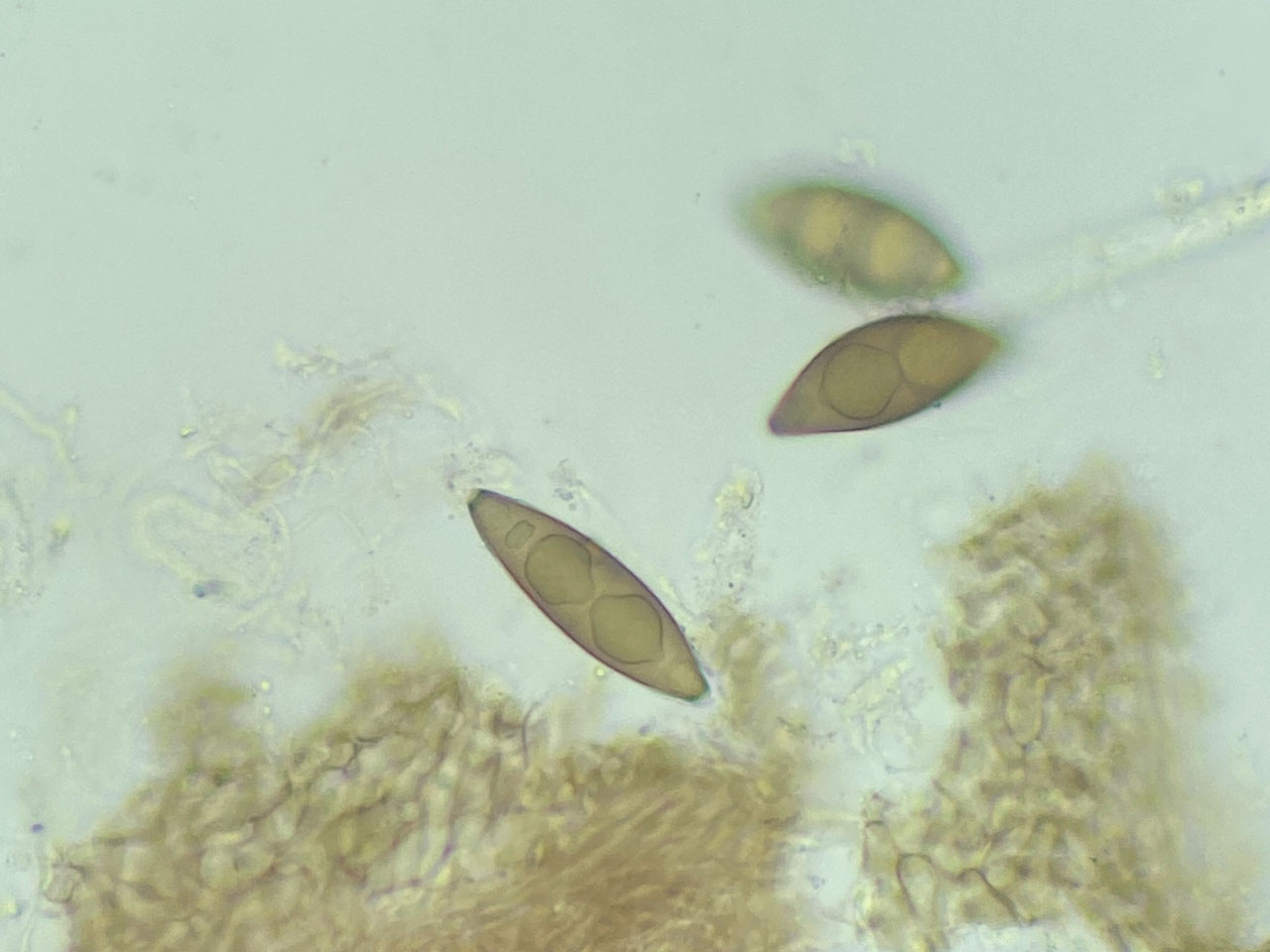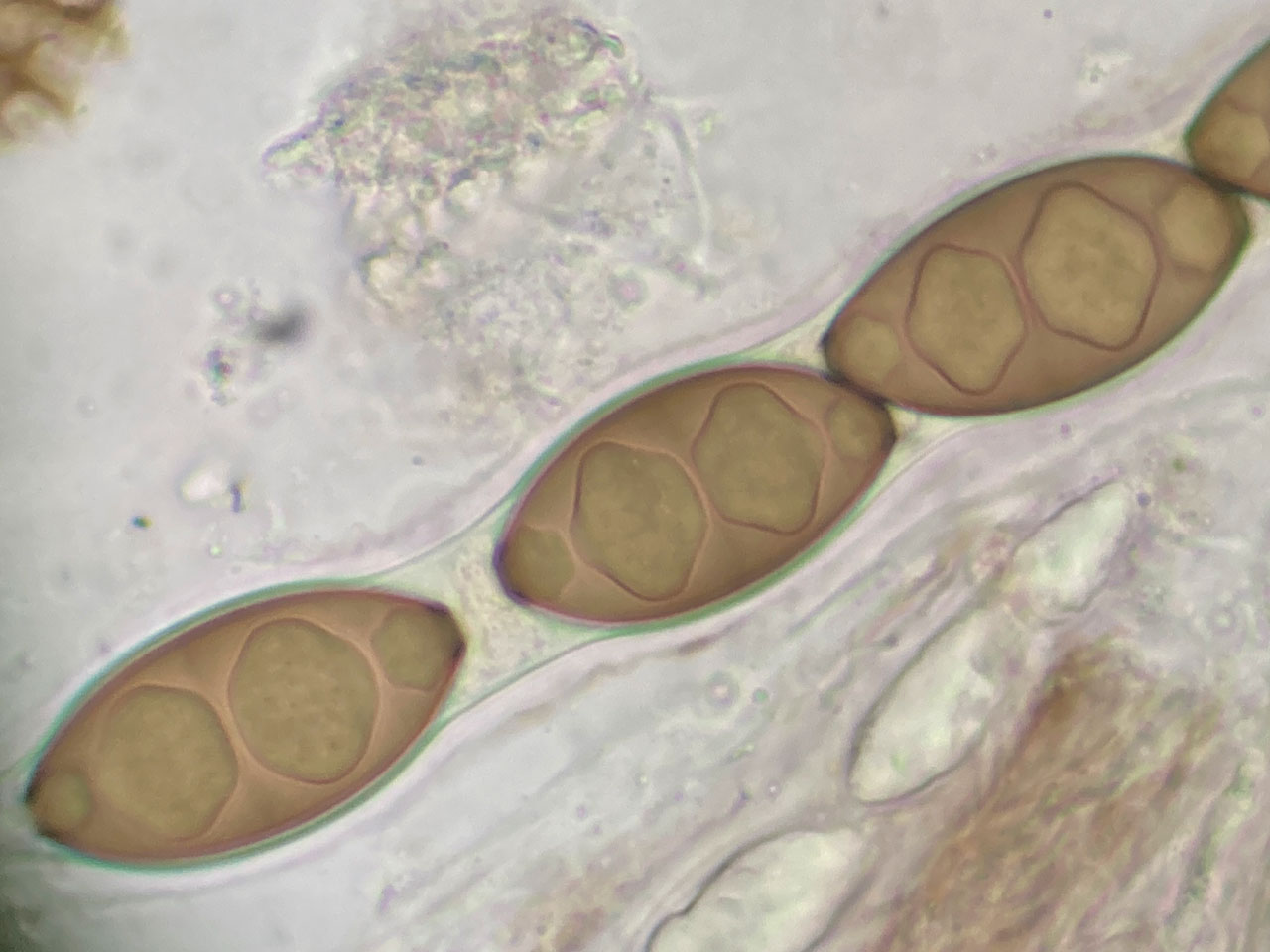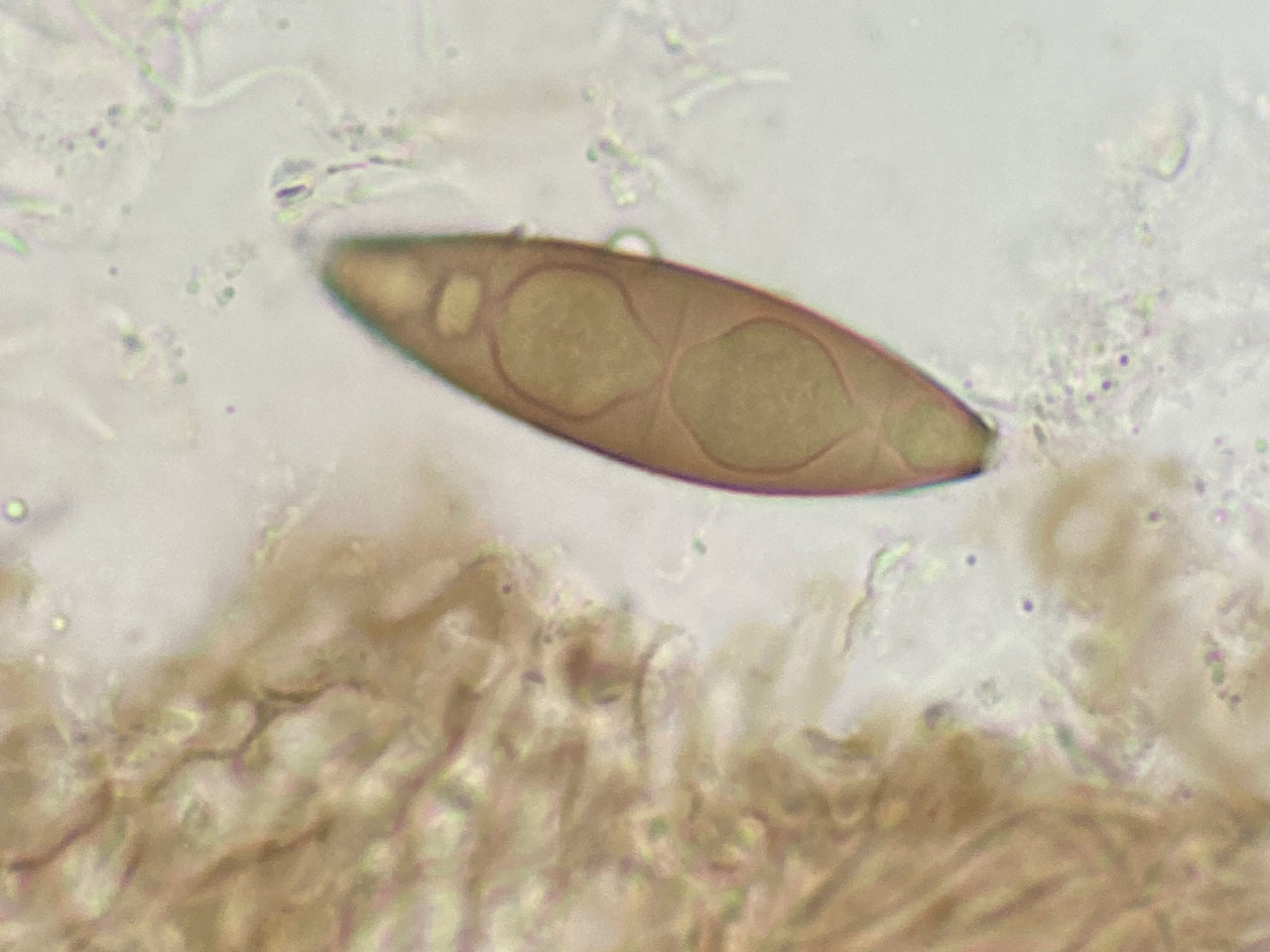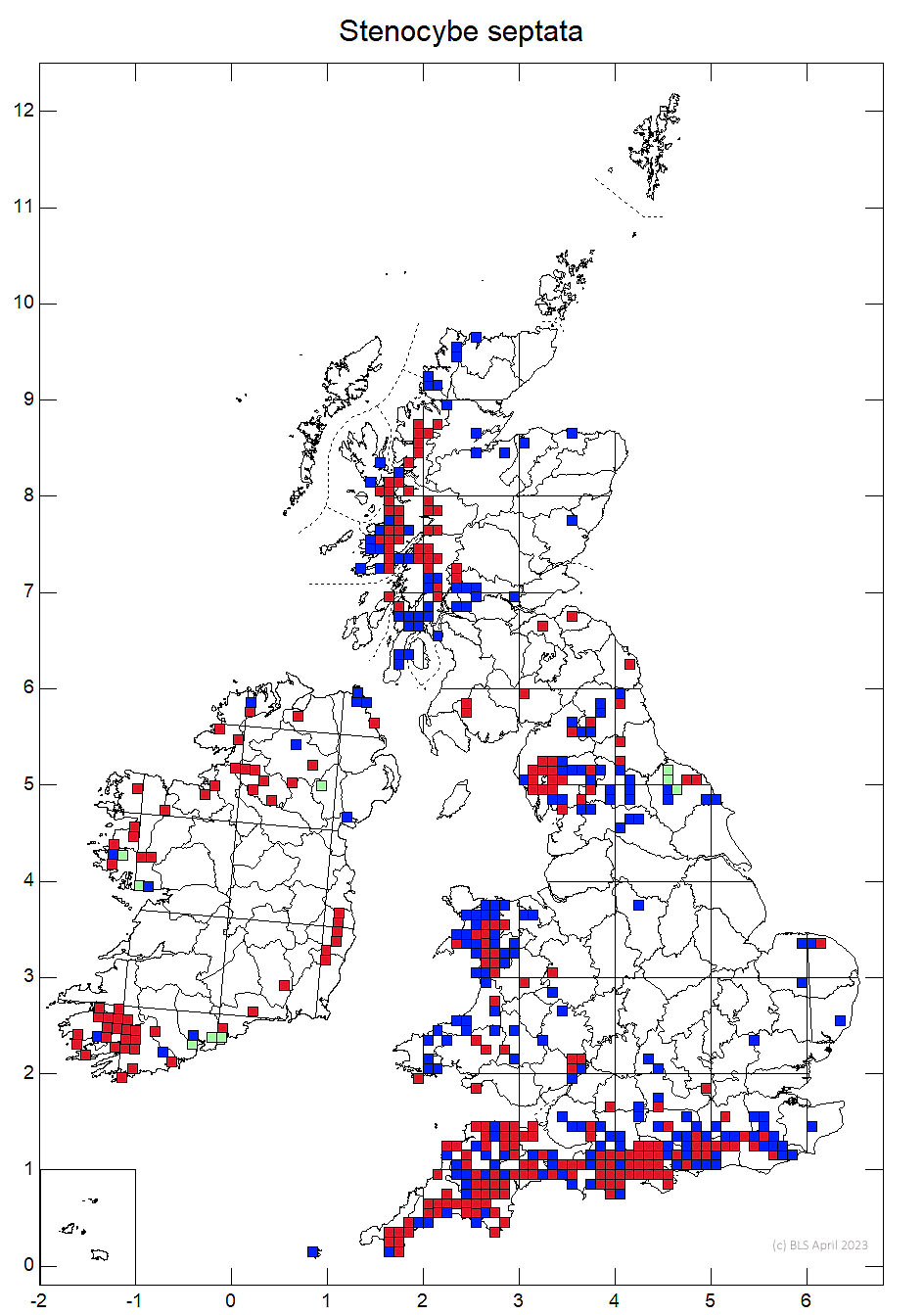Stenocybe septata
A small black pinhead fungus mainly found on the bark of better lit older Holly trunks, rarely also on Birch, Oak, Rowan and Hazel, especially in old woodlands. Widespread and locally frequent in western and southern Britain, local in Ireland. Best spotted by targeted searching by sighting along Holly trunks and looking for the silhouette of the pinhead apothecia.
Apothecia to 1.8 mm tall, black, single or sometimes united at the base in clusters of two or three; stalk to 0.15 mm diam., sometimes branched; head narrowly clavate, glossy, with an elevated ± incurving exciple, black. Hamathecium a network of very narrow, frequently anastomosing pseudoparaphyes. Ascus walls thin-walled, persistent. Ascospores (35–) 45–60 (–90) × (11–) 15–20 µm, variable, (1-)3(-6)-septate, ellipsoidal or elongate-ellipsoidal, red-brown, the outer small cells and septa ± uniformly thickened (distoseptate), 2–2.5 µm thick, except for a small, paler, sometimes shortly extended nipple at one or both apical cells.
Sometimes grows through the thalli of other lichens, e.g. Graphis elegans and Thelotrema lepadinum, then appearing as a parasite. The hamathecium and ascospore structure differs from other species of Stenocybe and it is likely to be mis-placed. No sequences are available.
Could be confused with the more strongly oceanic liverwort parasite Stenocybe nitida when growing though bryophytes but S. nitida has shining grey-black "gun metal" coloured apothecia heads and S. steptata has uniform black heads. Not lichenised and its mode of nutrition is unknown, it may have some relationship with the bark chloroplasts as suggested by it not occurring on densely shaded Holly trunks. Finding this fungus is not as hard as the tiny Stenocybe pullatula, but is also aided by targeted searching by sighting along Holly trunks and looking for the silhouette of the pinhead apothecia.
Mainly on bark of better lit older Holly trunks, rarely also on Birch, Oak, Rowan and Hazel, especially in old woodlands.
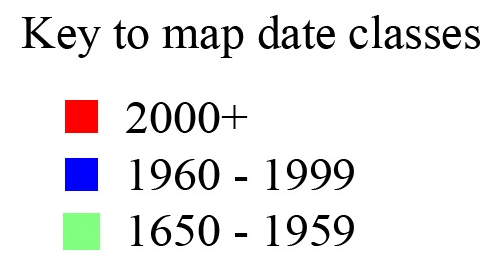
Common, S. & W. Britain and Ireland, extending to N. Scotland. Scattered records to the east.
Widespread and locally frequent in Britain but with remarkably few records outside of Britain and Ireland see GBIF. Not threatened in its core areas of distribution, but outlying sites likely lost to pollution in the past in central England.
Britain: a Notable and International Responsibility Species.
Sanderson, A., Cannon, P., Coppins, B., & Simkin, J. (2025). Mycocaliciales: Sphinctrinaceae, including Chaenothecopsis, Mycocalicium, Phaeocalicium, Sphinctrina and Stenocybe. Revisions of British and Irish Lichens 52: 1–15.
Text by Neil A Sanderson based on Sanderson et al (2025).
